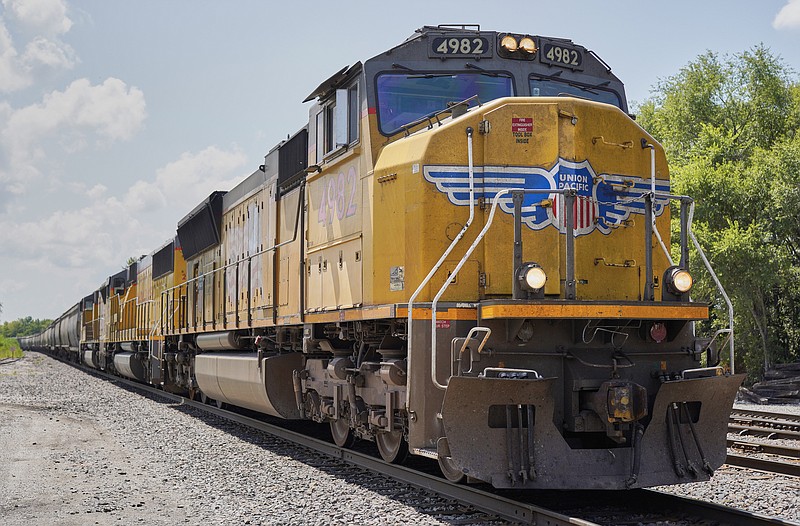OMAHA, Neb. -- Union Pacific's second-quarter profit fell 28% from a year ago as carload revenue tumbled in the coronavirus pandemic.
The railroad said Thursday that it expects improvement in the second half with full-year carload volumes to be down around 10% compared with 2019, assuming there isn't a second wave of virus-related economic shutdowns.
To get to a 10% full-year decline, the company said that it expects freight volumes to be down 6% to 8% in the second half as businesses continue to recover. "We're growing our optimism here in the near term," Chief Executive Officer Lance Fritz said.
Union Pacific made $1.13 billion from April through June, or $1.67 per share, beating Wall Street estimates. Analysts polled by FactSet expected earnings of $1.56 per share. Revenue of $4.24 billion was down 24% for the period, slightly below Wall Street projections.
In the second quarter big freight users such as automakers were forced to close their factories for weeks to help slow the spread of the virus.
[CORONAVIRUS: Click here for our complete coverage » arkansasonline.com/coronavirus]
As a result, Union Pacific's freight revenue fell as pricing gains were offset by lower volumes and decreased revenue from fuel surcharges, the company said Wednesday in a prepared statement.
"We've never experienced such a steep and deep decline in our carloads," Fritz said. "We've really climbed out pretty steadily since, call it early May, which is really encouraging."
The number of rail cars generating revenue tumbled 20% for the quarter, led by a 64% drop-off in the auto sector. Coal fell 24%, while industrial chemicals and plastics were down 10%. Metals and minerals were off 19%. Empty cars transported by the railroad don't generate revenue.
Company executives said freight volume is recovering enough for them to start recalling furloughed employees. But Fritz said that because of productivity gains such as running fewer trains that are longer, Union Pacific won't need as many workers as it did before the pandemic began.
The railroad is getting more engineering work done with fewer people, it's using fewer locomotives, and fewer cars are needed because they're traveling more miles per day, he said. The number of trains also has decreased, he said.
"You put that all together, there's no doubt that when we recover fully and start growing from last year, it's going to be done with fewer people than we had last year," he said.
The railroad has cut about 22% of its workforce in the past year and now has about 30,000 full-time workers, which Fritz said will grow as freight volumes increase.

